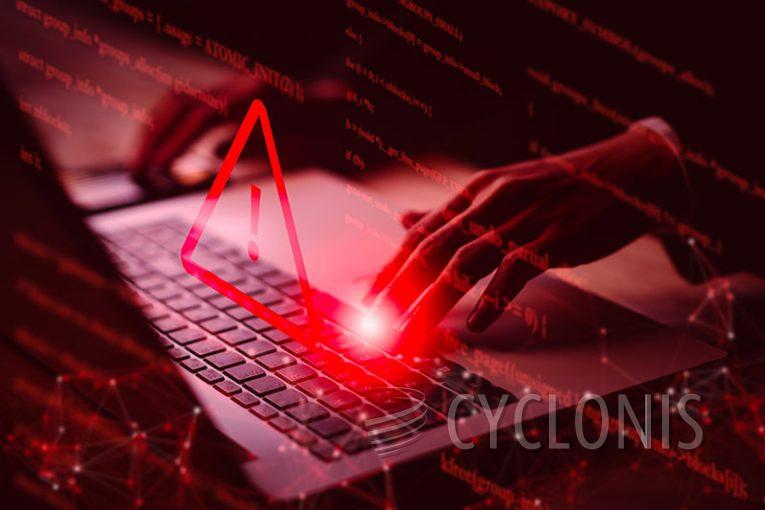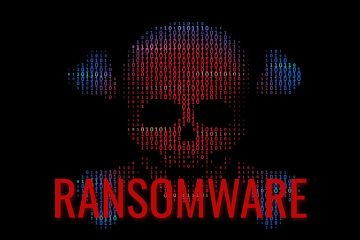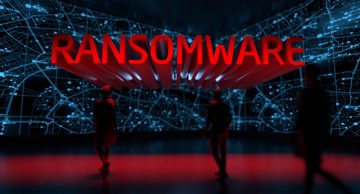How DragonForce Ransomware Forces Its Way In

Ransomware continues to plague multiple systems worldwide, with new variants emerging regularly. One such discovery is DragonForce Ransomware, a particularly malicious strain designed to extort victims by encrypting their files. Here, we explore the characteristics of DragonForce Ransomware, its modus operandi, and the broader implications of ransomware attacks.
Table of Contents
What is DragonForce Ransomware?
Like most ransomware, DragonForce encrypts the victim's files, making them inaccessible without a decryption key. Upon encryption, DragonForce renames files with a random string and appends the ".dragonforce_encrypted" extension. For example, "picture.png" might be renamed to "2fogjadxb9.dragonforce_encrypted," and so on.
The ransomware also drops a ransom note titled "readme.txt," which outlines the attackers' demands. This note is there to inform victims that their files have been stolen and encrypted, and it instructs them to pay a ransom in Bitcoin to recover their data. The note details how to contact the attackers via a Tor Browser link and a unique ID, with additional support available through Tox messenger.
The Ransom Note: Instructions and Threats
The DragonForce ransom note explains the steps victims must follow to recover their files:
- Contact the attackers.
- Receive a list of stolen files.
- Verify decryption capabilities.
- Agree on a payment amount.
- Receive a decryption tool.
The note also issues warnings against resetting or shutting down the system, renaming or moving files, and deleting the ransom note to prevent further damage. It threatens to publish stolen files and destroy the decryption tool if the victim does not comply with the specified deadline.
While the note tries to pressure victims into paying the ransom, cybersecurity experts strongly advise against it. There is no guarantee that the attackers will provide the decryption tool even after payment. Instead, victims are encouraged to seek free online decryption tools or backups to restore their files without financial loss.
Here's the full text of the note:
Hello!
Your files have been stolen from your network and encrypted with a strong algorithm. We work for money and are not associated with politics. All you need to do is contact us and pay.
--- Our communication process:
1. You contact us.
2. We send you a list of files that were stolen.
3. We decrypt 1 file to confirm that our decryptor works.
4. We agree on the amount, which must be paid using BTC.
5. We delete your files, we give you a decryptor.
6. We give you a detailed report on how we compromised your company, and recommendations on how to avoid such situations in the future.
--- Client area (use this site to contact us):Link for Tor Browser: -
>>> Use this ID: 5259BC46FA73563564AA07A84EC63608 to begin the recovery process.* In order to access the site, you will need Tor Browser,
you can download it from this link: hxxps://www.torproject.org/--- Additional contacts:
Support Tox: 1C054B722BCBF41A918EF3C485712742088F5C3E81B2FDD91ADEA6BA55F4A856D90A65E99D20
--- Recommendations:
DO NOT RESET OR SHUTDOWN - files may be damaged.
DO NOT RENAME OR MOVE the encrypted and readme files.
DO NOT DELETE readme files.--- Important:
If you refuse to pay or do not get in touch with us, we start publishing your files.
12/07/2024 00:00 UTC the decryptor will be destroyed and the files will be published on our blog.Blog: -
Sincerely, 01000100 01110010 01100001 01100111 01101111 01101110 01000110 01101111 01110010 01100011 01100101
The Nature of Ransomware Attacks
Ransomware is malware designed to encrypt files, rendering them inaccessible to the victim. The main objective of ransomware attacks is to extort money from victims in exchange for the decryption tools needed to regain access to their data. Typically, victims receive instructions on contacting the attackers and paying, often in cryptocurrency like Bitcoin, to receive these tools.
Most ransomware variants encrypt and rename files to indicate that they have been compromised. To prevent data loss in the event of a ransomware attack, it is crucial to regularly back up files and store these backups on remote servers or disconnected storage devices. Other examples of ransomware include DeathGrip, JOKER (Chaos), and CyberVolk.
How Ransomware Spreads
Cybercriminals employ various tactics to trick users into executing ransomware on their computers. Common methods include sending malicious files or links via email, embedding ransomware in pirated software, cracking tools, or key generators, and exploiting software vulnerabilities to deliver ransomware payloads. Additionally, ransomware can spread through infected USB drives, malicious advertisements, technical support scams, compromised web pages, P2P networks, third-party downloaders, and unofficial sites or app stores.
To reduce the risk of infection, ensure you download software and files exclusively from trusted sources like official websites or app stores. Refrain from opening attachments or clicking on links in unsolicited emails or messages, particularly those from unknown or suspicious senders. Furthermore, refrain from installing pirated software, cracking tools, or key generators, as these often contain hidden malware.
Optimal Practices for Cybersecurity
Maintaining robust cybersecurity practices is vital to protect against ransomware like DragonForce. Regularly updating the operating system and software applications helps patch vulnerabilities that ransomware could exploit. Additionally, using reliable antivirus or anti-malware software provides an extra defense against potential threats.
Being cautious online is also crucial. Avoid interacting with ads, pop-ups, and other questionable content on untrusted websites. Treat incoming emails, direct messages, and SMSes with care, especially those containing attachments or links from unknown or suspicious sources. By staying vigilant and proactive, individuals and organizations can significantly reduce the risk of falling victim to ransomware attacks.
Final Thoughts
DragonForce Ransomware exemplifies the growing sophistication and threat of ransomware attacks in the digital world. Understanding how this malware operates and taking preventive measures can help mitigate the risks associated with such cyber threats. By maintaining regular backups, practicing good cybersecurity hygiene, and remaining vigilant, users can protect their data and systems from the devastating effects of ransomware like DragonForce.








